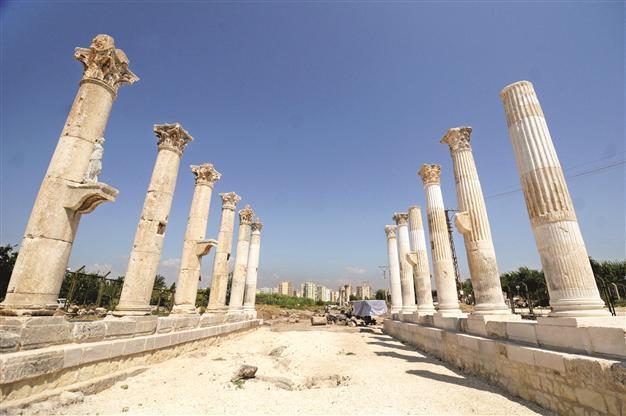Signs of earthquake revealed in excavation
MERSİN - Anatolia News Agency

The ancient city of Solo Pompeiopolis
in Mersin.
Signs of a Byzantine-era earthquake have been discovered in the ancient city of Soloi Pompeiopolis in the southern province of Mersin.
The excavation team found signs of an earthquake during excavations on the city’s Milli Egemenlik Street, according to the project head, Professor Remzi Yağcı of Dokuz Eylül University. “We have found three big, half-broken cubes, Roman and Byzantine coins and a big structure. We think that this structure was ruined by an earthquake in the early Byzantine period. Its real function will be understood after future excavations. This is the second structure we have discovered that was ruined in a big earthquake in Pompeiopolis. It is an important historical finding to understand the Anatolian earthquake,” he said.
The 40-person excavation team worked on Sütunlu Cadde, Soli Tumulus and the Necropolis in the Mezit district of the ancient city this year. Yağcı told Anatolia news agency they had worked on the Roman layers of the ancient city. “Here we have found architectural structures like a furnace and a pool. The most important finding from the Soli Tumulus this year is a plaque with relief on it. Similar examples have been found in Ionia, Phrygia, Lydia, Aolia and Karia. The plaque features a scene of the Greek hero Theseus killing the Minotaur.”
